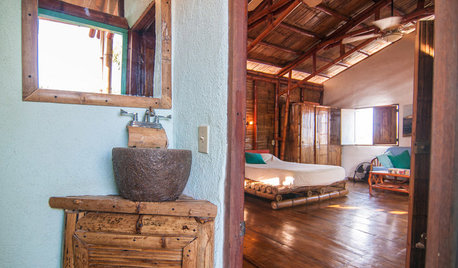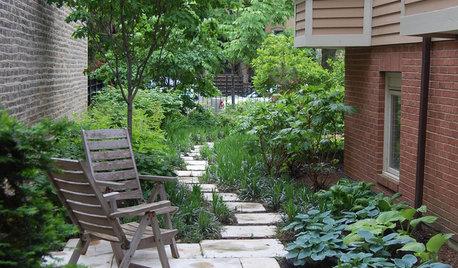We have a 40+ year old Granada that appeared to be on its last leg. It had 1 gray gnarly trunk with 2 canes at the top. We decided to try propagating a new Granada using whatever stems we could salvage.
This is my first attempt EVER at trying to propagate a new rose using any method. Most of my prior plant propagation experience involves Salvia cuttings stuck in outdoor soil wherever I want a new plant to grow, and several weeks later we have a new rooted plant in bloom! Anyway, Roses are different animals... er... plants... and I wanted to be sure I did things right.
So, I turned to this forum. I have received a lot of help from several of you, especially Kim. From all the input I received, I chose the "wrap in newspaper" method to root the cane, and this rooting method from Hartwood Roses to root the small stems at the top.
So, let the experiment begin! I thought I'd start a new thread to chronicle the project. Whether or not it succeeds, I'm hoping some of us can learn something from this. I'm calling it our "Granada Rejuvenation Experiment".
I begin with a picture of one of her beautiful blooms, taken last year...
{{gwi:220404}}
... and here is the plant that produced that bloom last year. Believe it or not, I did feed, water, and mulch it yearly.
{{gwi:220406}}
So my husband cut off the upper cane (I don't know what happened to the lower one) and put it in a barrel of water to soak in the shade until we decided what to do....
{{gwi:220409}}
... and cut the trunk down to the ground. :(
{{gwi:220410}}
Jan. 26, 2012 (evening): Following Kim's excellent instructions, I cut the cane into 3 pieces, cutting at an angle just below a bud, trying to get 2 or more buds in each piece. I also cut off the stems at the top. I put all of them in a little cup of diluted liquid seaweed to soak overnight. (NOTE: Later, Kim advised NOT soaking the cane pieces as the seaweed might promote rot inside the burrito.) The original plant tag is leaning on the cup.
{{gwi:220412}}
January 27 (next morning): Using a sharp paring knife and keeping it flat against the cane, I carefully scraped the bark off the cane pieces. I fear I removed too much, but there's no turning back now.
{{gwi:220413}}
{{gwi:220414}}
{{gwi:220415}}
I rinsed the seaweed off the canes pieces and wrapped them in a dry paper towel to soak up any excess moisture. Meanwhile, I assembled the burrito ingredients.
Next, I made the burritos. [Sorry, no pictures. I was so involved in doing everything "perfectly" and keeping the toxic rooting hormone off of my skin, eyes, and clothes that taking pictures at this stage didn't even enter my mind!] I used 2 sheets of newspaper, dampened by misting with a spray bottle and carefully squeezed out all excess water. (I tried wetting 4 sheets under running water but that turned into a wet ball of pulp when I wrung it out.) I scored the basal end of each cane piece and dipped that end in 15X Dip 'n Grow. I wrapped all the cane pieces in the damp newspaper, burrito style, and put the burrito into a plastic ziploc freezer bag, secured it with a rubber band, and put it on a shelf on the north wall of our cool garage. Oh, I labeled it "Granada cuttings, 1/27/12", in case hubby sees it and thinks it's a piece of trash from days gone by.
{{gwi:220416}}
Next, I planted the little stems which were still soaking in the diluted liquid seaweed. I shortened the leaflets (per Hartwood's instructions) and gently scored a shallow cut into each side of the basal end. I filled the base of a plastic milk bottle (which I had punctured with holes in the bottom for drainage) with 4 parts sphagnum peat and 6 parts perlite, wet it well and let it drain. Then, I dipped each stem end into the 15X Dip 'n Grow and stuck them into holes in the medium, gently tamped the soil around each stem, and poured a little water around each one to help the mix settle around them. I covered them with the top of an empty plastic apple juice bottle (we don't drink soda, and the apple juice bottle was just the right size) which I taped to the base to prevent any critters from bumping it off. Finally, I set the container in a spot on the north side of the house that gets bright shade all day. I'll put it inside the garage at night (our nighttime temps are currently mid-40s).
{{gwi:220417}}
And then I said a prayer. Please, Lord, help these root!
















aklinda
seil zone 6b MI
Related Professionals
Saint Matthews Landscape Architects & Landscape Designers · Wixom Landscape Architects & Landscape Designers · Burlington Landscape Contractors · Brookfield Landscape Contractors · Cary Landscape Contractors · Fuquay-Varina Landscape Contractors · Hicksville Landscape Contractors · McLean Landscape Contractors · Mercedes Landscape Contractors · New Brighton Landscape Contractors · Palm Beach Gardens Landscape Contractors · Porterville Landscape Contractors · Stony Brook Landscape Contractors · Waterford Landscape Contractors · Hueytown Landscape ContractorsjennOriginal Author
roseblush1
jennOriginal Author
TNY78
jennOriginal Author
jennOriginal Author
roseseek
jennOriginal Author
roseseek
jennOriginal Author
jennOriginal Author
roseseek
jennOriginal Author
jennOriginal Author
jennOriginal Author